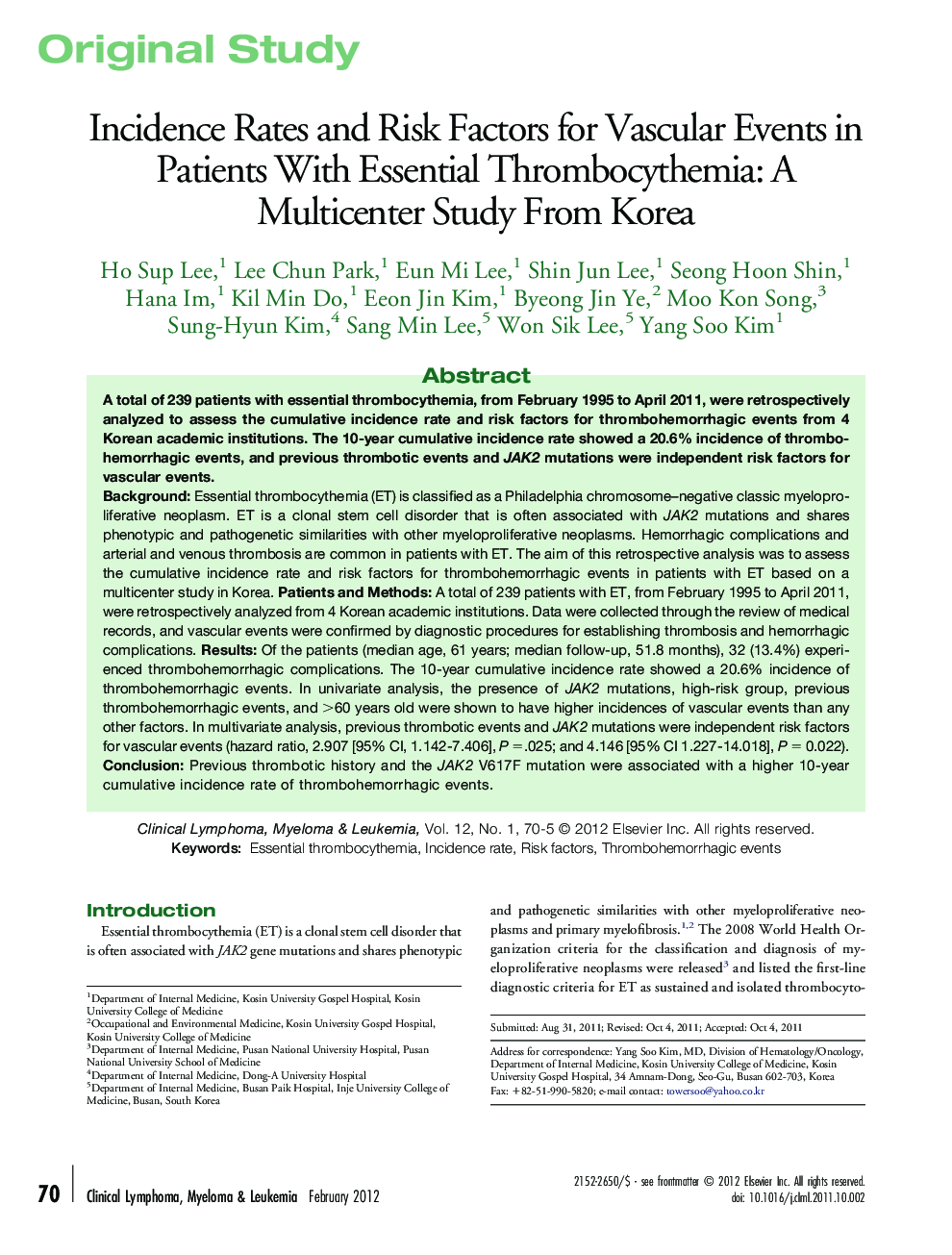| Article ID | Journal | Published Year | Pages | File Type |
|---|---|---|---|---|
| 2755141 | Clinical Lymphoma Myeloma and Leukemia | 2012 | 6 Pages |
BackgroundEssential thrombocythemia (ET) is classified as a Philadelphia chromosome–negative classic myeloproliferative neoplasm. ET is a clonal stem cell disorder that is often associated with JAK2 mutations and shares phenotypic and pathogenetic similarities with other myeloproliferative neoplasms. Hemorrhagic complications and arterial and venous thrombosis are common in patients with ET. The aim of this retrospective analysis was to assess the cumulative incidence rate and risk factors for thrombohemorrhagic events in patients with ET based on a multicenter study in Korea.Patients and MethodsA total of 239 patients with ET, from February 1995 to April 2011, were retrospectively analyzed from 4 Korean academic institutions. Data were collected through the review of medical records, and vascular events were confirmed by diagnostic procedures for establishing thrombosis and hemorrhagic complications.ResultsOf the patients (median age, 61 years; median follow-up, 51.8 months), 32 (13.4%) experienced thrombohemorrhagic complications. The 10-year cumulative incidence rate showed a 20.6% incidence of thrombohemorrhagic events. In univariate analysis, the presence of JAK2 mutations, high-risk group, previous thrombohemorrhagic events, and >60 years old were shown to have higher incidences of vascular events than any other factors. In multivariate analysis, previous thrombotic events and JAK2 mutations were independent risk factors for vascular events (hazard ratio, 2.907 [95% CI, 1.142-7.406], P =.025; and 4.146 [95% CI 1.227-14.018], P = 0.022).ConclusionPrevious thrombotic history and the JAK2 V617F mutation were associated with a higher 10-year cumulative incidence rate of thrombohemorrhagic events.
